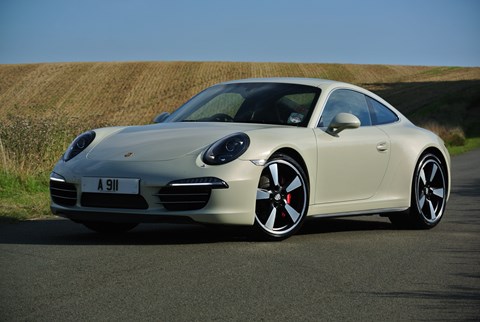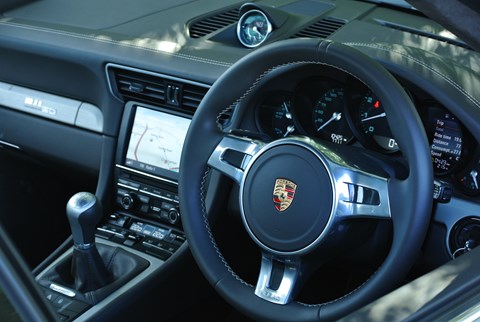► The joy of a manual gearchage
► Autos are taking over the world
► And Walton’s cross about it
Like trainspotters dancing a jig at the appearance of loco 82207 pulling into Birmingham New Street, Porsche fans also get excited about number plates. Porsche GB has been using the same registrations for decades now, and their appearances are always noteworthy to the nerdier end of the Porsche community. So 911 HUL has famously appeared on press cars since the ’70s, usually on the latest Turbo model, and is currently on a 991 Turbo S; OPR 911 has been used since the ’80s, and is currently assigned to a GT3 RS press car; and the other day I was lucky to drive the most remarkable plate of them all, A911, fixed to a ‘pure spec’ rear-drive Carrera. Best of all, A911 is a manual.
Now, I know in the real world of Aygos and Qashqais and 15-year-old Vauxhall Corsas, a clutch pedal is neither rare nor enchanting as you sit in rush-hour traffic, your brain sagging like warm squirty cream. But in the world of sports and supercars, I can’t remember the last time I drove a 350-plus-bhp rear-drive car with a proper gearstick. Probably an F-Type about four years ago? Manuals are a special treat these days, and in the wake of all that controversy surrounding the paddleshift-only 991 GT3 back in 2013 (a scandal I hilariously christened ‘Gategate’ ha ha ha), driving a modern Porsche manual is an especially special occasion.

Thing is, as I hustle A911 along, hoovering up every tactile sensation like a child sucking up Heinz spaghetti, a more sober part of my brain starts to ask: ‘Why? Why do I derive pleasure from this?’ It seems an unlikely entertainment, if you think about it, pressing pedals and pulling levers like the Wizard of Oz behind his little curtain. Is it nostalgia? Is it the exercise? I don’t think it’s to do with any added mechanical intensity – the 911’s Teflon-coated refinement means you don’t sense any whirring cogs or shafts like you do in, say, a Caterham.
And then it strikes me: it’s what a manual does to the noise. With its slower, more deliberate shifts, the way the revs rise and fall, a manual creates a particular tempo to the sound, one that’s lost when you add a robotic paddleshift. A Porsche fitted with a PDK – or any supercar with a lightning-quick auto – sounds linear and staccato compared to a manual change.
And if this were an electric car, and progress was completely silent? Even if electric cars were fitted with a gearbox (which they’re not), would I want to sit here, pumping away at the clutch like I’m inflating a tyre, stirring this stick with my left hand? It would be ridiculous.
The latest turbocharged 3.0-litre 911 doesn’t even have a particularly zingy sound: it revs out to 7500rpm, and at the top end there is a muted howl, buried deep somewhere in the back, under layers of carpet. It sounds like the action is going on in an adjoining room, rather than in the car with you. Plus, the seven-speed ’box is so long-legged, redlining it in third means you’re doing well over 100mph and you’re not even halfway through the ’box. You can really only ring its neck in the first two gears.

So why the pleasure, if you’re spending all your time rustling around the midrange? Because with a manual this mechanical sound becomes musical. The richness of the flat-six, the pauses, the cadence, the changes in tempo and key as I go up and down the gears… it’s like playing scales on a glockenspiel. No, better than that, it’s like a theremin, that weird electronic instrument you play by hovering your hands over two metal antennae – a strange, warbling, mournful sound, once described as ‘a cello lost in fog’.
In fact, this could open up a whole new avenue of car journalism: road testing cars using musical terminology. ‘Yes, I like to drive my Porsche a capriccio, beginning accarezzevole, but then with incalzando, holding the gears fermata, with a pronounced caesura with each gearchange until we are prestissimo, the engine note spinto tenor, full of harmonic squillo, the whole thing maestoso!’
Driving A911 can still inspire such talk, but I doubt it’ll catch on describing a Qashqai.
More opinion pieces by Mark Walton